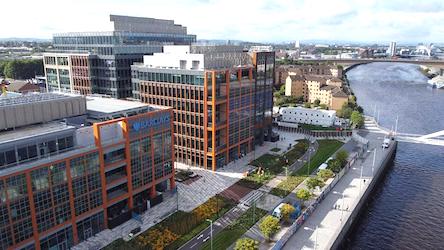Savills’ latest report on the Glasgow office market has reported that Scotland’s biggest city is at a “tipping point” as a lack of new office development in the city centre could see “refurbishment” rents outstrip rents on new-builds in 2023 for first time in six years to reach £36 per sq ft.
“With less than a year’s supply of new office accommodation (100,000 sq ft) in the city and no further new office developments available for occupation until 2025, Savills latest report says Glasgow landlords with high quality refurbishments have an opportunity to satisfy demand and capture significant rental growth in 2023 …” said the report.
“By comparing the current new build Grade A rents (£35.25) against best in class refurbished space (£30) Savills found that Glasgow has one of the largest rental gaps at c.15%, compared to c.10% in other Big 6 regional markets*.
“Meanwhile, demand for best in class space prevails, says Savills, evidenced by almost 60% of all office lettings in 2021 (303,077 sq ft) on Grade A accommodation.”
David Cobban, head of Savills Glasgow and director in the office agency team, said: “Glasgow has a perfect marriage of occupiers demanding the very best design and little available supply, with wider ESG requirements that are encouraging developers to explore retrofit options, rather than build new.
“The significant opportunity to capture rental growth could trigger welcome investment into our existing city offices and breathe new life into tired buildings that occupy strong locations.
“Refurbishments are both quicker to deliver and often more economical.
“Evidence suggests occupiers are prepared to pay higher rents for better space and a weight of demand swaying towards ‘best in class’.
“What’s more, when considering some of the viability issues associated with spiraling build costs, refurbishments will play an increasingly vital role.”
Nadeem Khan, director in Savills Engineering & Design consultancy, working closely with Savills Earth, adds: “Newly constructed buildings are of course more energy efficient, given the opportunity to design for net zero emissions at concept stage, however its estimated that around 80% of the buildings that will be standing in 2045, have already been built, so a major priority is decarbonising our existing stock.”
